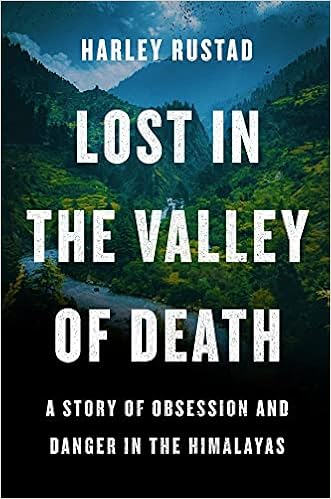
 I am an intrepid armchair adventurer. One of my earliest memories is listening to a report that Tenzing Norgay and Edmund Hillary had summited Mt. Everest - on the radio. (Yes, I'm that O-L-D.)
Mt. Everest has fascinated me all my life. I devoured John Krakauer's book, Into Thin Air, about the notorious 1996 climbing disaster and became a long-time subscriber to Outside Magazine. In 1997, my daughter and I heard Krakauer speak at OISE about another of his books, Into the Wild. He changed our thinking forever.
Into the Wild is the story of 19 year old Christopher McCandless, who, disillusioned by modern life, turned to a nomadic existence and changed his name to Alex Supertramp. He ended up dying in an abandoned school bus in Denali National Park, Alaska after a failed attempt to live off the land. Before I would have written off McCandless as a victim of misadventure (he ate a poisonous plant), but Krakauer illuminated his tragedy. Nature isn't a gentle spiritual healer: nature just is.
When Amazon recommended, Lost in Valley of Death by Harley Rustad, it took me a whole two seconds to buy it. Rustad's book struck me as a fusion of Into the Wild and The Cold Vanish, a gripping collection of true stories about people who'd vanished in the wilderness by a search-and-rescue expert, Jon Billman,
Rustad, like Krakauer and Billman, is a writer for Outside Magazine which values excellence in non-fiction writing. Even better, he's Canadian!
His beautifully written and meticulously researched book examines the tragic life of another lost soul, Justin Alexander Shetler, who vanished in India's Parvati Valley or the "Backpackers Bermuda Triangle". There are definite similarities between McCandless and Shetler, but at age 35, Shetler was older and more experienced and what happened to him underscores the downside of living in the digital age.
The Parvati Valley lies in Northern India in the Himalayan Mountains. This remote and rugged region is a spiritual destination for Sikh and Hindu pilgrims: legend has it that Shiva, the Destroyer God, meditated there for 3000 years. What is also true is that the valley is a source of potent black hash. Though marihuana and hash are illegal in India, local authorities turn a blind eye to its use, at least by the locals. Not only do the police lack the resources for enforcement, the hash brings in Western tourists and significant economic benefits to the area. The Western search for spiritual enlightenment is big business.
Several travelers go missing every year in the Parvati Valley. Some disappear intentionally and reside there illegally before being discovered and deported. Others are victims of hiking accidents or fall afoul of bandits and/or drug dealers. The ferocious rapids of the Parvati River ensure that the bodies of the disappeared are rarely recovered.
Shetler was far from being a wide-eyed tourist. He'd travelled throughout Asia and made many friends there. An accomplished nature guide and tough survivalist, he'd survived the break-up of his parents' marriage, sexual abuse and a near-fatal car accident. A keen, deep-set spiritual void turned him into a nomad, constantly seeking fulfillment from the world around him. He assumed and shed many identities in his short life: environmentalist, Buddhist monk, IT entrepreneur, motorcycle rider and sadhu disciple.
His emptiness was fueled by an obsession to document his adventures on social media. Far from healing him, the pressing demand for content from his followers let the demons of marketing invade his soul. He became a brand in pursuit of an identity. Perhaps this desperation is why he resorted to buying and selling hash to finance his spiritual journey and to trusting the wrong people.
Rustad's book is a cautionary tale for those who fail to understand what Western tourists represent to an impoverished population. And a warning that even the mightiest man may be slain by one arrow.
RATING: 5 STARS!!
I am an intrepid armchair adventurer. One of my earliest memories is listening to a report that Tenzing Norgay and Edmund Hillary had summited Mt. Everest - on the radio. (Yes, I'm that O-L-D.)
Mt. Everest has fascinated me all my life. I devoured John Krakauer's book, Into Thin Air, about the notorious 1996 climbing disaster and became a long-time subscriber to Outside Magazine. In 1997, my daughter and I heard Krakauer speak at OISE about another of his books, Into the Wild. He changed our thinking forever.
Into the Wild is the story of 19 year old Christopher McCandless, who, disillusioned by modern life, turned to a nomadic existence and changed his name to Alex Supertramp. He ended up dying in an abandoned school bus in Denali National Park, Alaska after a failed attempt to live off the land. Before I would have written off McCandless as a victim of misadventure (he ate a poisonous plant), but Krakauer illuminated his tragedy. Nature isn't a gentle spiritual healer: nature just is.
When Amazon recommended, Lost in Valley of Death by Harley Rustad, it took me a whole two seconds to buy it. Rustad's book struck me as a fusion of Into the Wild and The Cold Vanish, a gripping collection of true stories about people who'd vanished in the wilderness by a search-and-rescue expert, Jon Billman,
Rustad, like Krakauer and Billman, is a writer for Outside Magazine which values excellence in non-fiction writing. Even better, he's Canadian!
His beautifully written and meticulously researched book examines the tragic life of another lost soul, Justin Alexander Shetler, who vanished in India's Parvati Valley or the "Backpackers Bermuda Triangle". There are definite similarities between McCandless and Shetler, but at age 35, Shetler was older and more experienced and what happened to him underscores the downside of living in the digital age.
The Parvati Valley lies in Northern India in the Himalayan Mountains. This remote and rugged region is a spiritual destination for Sikh and Hindu pilgrims: legend has it that Shiva, the Destroyer God, meditated there for 3000 years. What is also true is that the valley is a source of potent black hash. Though marihuana and hash are illegal in India, local authorities turn a blind eye to its use, at least by the locals. Not only do the police lack the resources for enforcement, the hash brings in Western tourists and significant economic benefits to the area. The Western search for spiritual enlightenment is big business.
Several travelers go missing every year in the Parvati Valley. Some disappear intentionally and reside there illegally before being discovered and deported. Others are victims of hiking accidents or fall afoul of bandits and/or drug dealers. The ferocious rapids of the Parvati River ensure that the bodies of the disappeared are rarely recovered.
Shetler was far from being a wide-eyed tourist. He'd travelled throughout Asia and made many friends there. An accomplished nature guide and tough survivalist, he'd survived the break-up of his parents' marriage, sexual abuse and a near-fatal car accident. A keen, deep-set spiritual void turned him into a nomad, constantly seeking fulfillment from the world around him. He assumed and shed many identities in his short life: environmentalist, Buddhist monk, IT entrepreneur, motorcycle rider and sadhu disciple.
His emptiness was fueled by an obsession to document his adventures on social media. Far from healing him, the pressing demand for content from his followers let the demons of marketing invade his soul. He became a brand in pursuit of an identity. Perhaps this desperation is why he resorted to buying and selling hash to finance his spiritual journey and to trusting the wrong people.
Rustad's book is a cautionary tale for those who fail to understand what Western tourists represent to an impoverished population. And a warning that even the mightiest man may be slain by one arrow.
RATING: 5 STARS!!
Like this:
Like Loading...
I am an intrepid armchair adventurer. One of my earliest memories is listening to a report that Tenzing Norgay and Edmund Hillary had summited Mt. Everest - on the radio. (Yes, I'm that O-L-D.) Mt. Everest has fascinated me all my life. I devoured John Krakauer's book, Into Thin Air, about the notorious 1996 climbing disaster and became a long-time subscriber to Outside Magazine. In 1997, my daughter and I heard Krakauer speak at OISE about another of his books, Into the Wild. He changed our thinking forever. Into the Wild is the story of 19 year old Christopher McCandless, who, disillusioned by modern life, turned to a nomadic existence and changed his name to Alex Supertramp. He ended up dying in an abandoned school bus in Denali National Park, Alaska after a failed attempt to live off the land. Before I would have written off McCandless as a victim of misadventure (he ate a poisonous plant), but Krakauer illuminated his tragedy. Nature isn't a gentle spiritual healer: nature just is. When Amazon recommended, Lost in Valley of Death by Harley Rustad, it took me a whole two seconds to buy it. Rustad's book struck me as a fusion of Into the Wild and The Cold Vanish, a gripping collection of true stories about people who'd vanished in the wilderness by a search-and-rescue expert, Jon Billman, Rustad, like Krakauer and Billman, is a writer for Outside Magazine which values excellence in non-fiction writing. Even better, he's Canadian! His beautifully written and meticulously researched book examines the tragic life of another lost soul, Justin Alexander Shetler, who vanished in India's Parvati Valley or the "Backpackers Bermuda Triangle". There are definite similarities between McCandless and Shetler, but at age 35, Shetler was older and more experienced and what happened to him underscores the downside of living in the digital age. The Parvati Valley lies in Northern India in the Himalayan Mountains. This remote and rugged region is a spiritual destination for Sikh and Hindu pilgrims: legend has it that Shiva, the Destroyer God, meditated there for 3000 years. What is also true is that the valley is a source of potent black hash. Though marihuana and hash are illegal in India, local authorities turn a blind eye to its use, at least by the locals. Not only do the police lack the resources for enforcement, the hash brings in Western tourists and significant economic benefits to the area. The Western search for spiritual enlightenment is big business. Several travelers go missing every year in the Parvati Valley. Some disappear intentionally and reside there illegally before being discovered and deported. Others are victims of hiking accidents or fall afoul of bandits and/or drug dealers. The ferocious rapids of the Parvati River ensure that the bodies of the disappeared are rarely recovered. Shetler was far from being a wide-eyed tourist. He'd travelled throughout Asia and made many friends there. An accomplished nature guide and tough survivalist, he'd survived the break-up of his parents' marriage, sexual abuse and a near-fatal car accident. A keen, deep-set spiritual void turned him into a nomad, constantly seeking fulfillment from the world around him. He assumed and shed many identities in his short life: environmentalist, Buddhist monk, IT entrepreneur, motorcycle rider and sadhu disciple. His emptiness was fueled by an obsession to document his adventures on social media. Far from healing him, the pressing demand for content from his followers let the demons of marketing invade his soul. He became a brand in pursuit of an identity. Perhaps this desperation is why he resorted to buying and selling hash to finance his spiritual journey and to trusting the wrong people. Rustad's book is a cautionary tale for those who fail to understand what Western tourists represent to an impoverished population. And a warning that even the mightiest man may be slain by one arrow. RATING: 5 STARS!!
